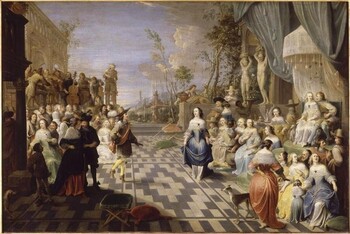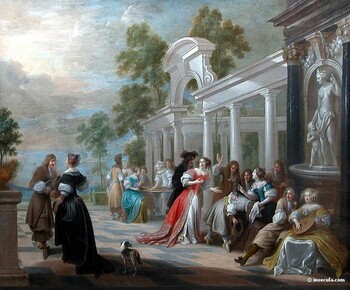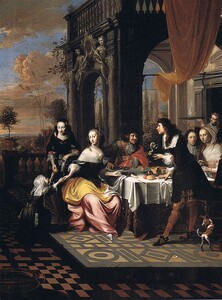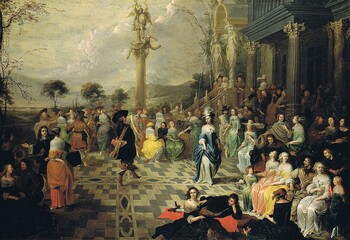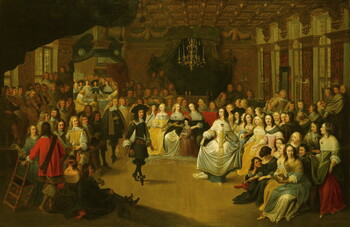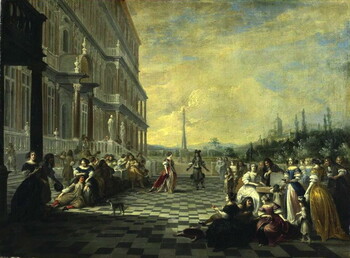Hieronymus Janssens
A scene on a terrace of a palace with an elegant company feasting
Oil on panel : 63,8 X 48,3 cm
Indistinctly inscribed lower right “A. Haerlem”
Sold at Sotheby’s London, 16/12/99
For 42.480 £ = 68.444 €
London, currently with Gallery Rafael Valls
This is a comparative item
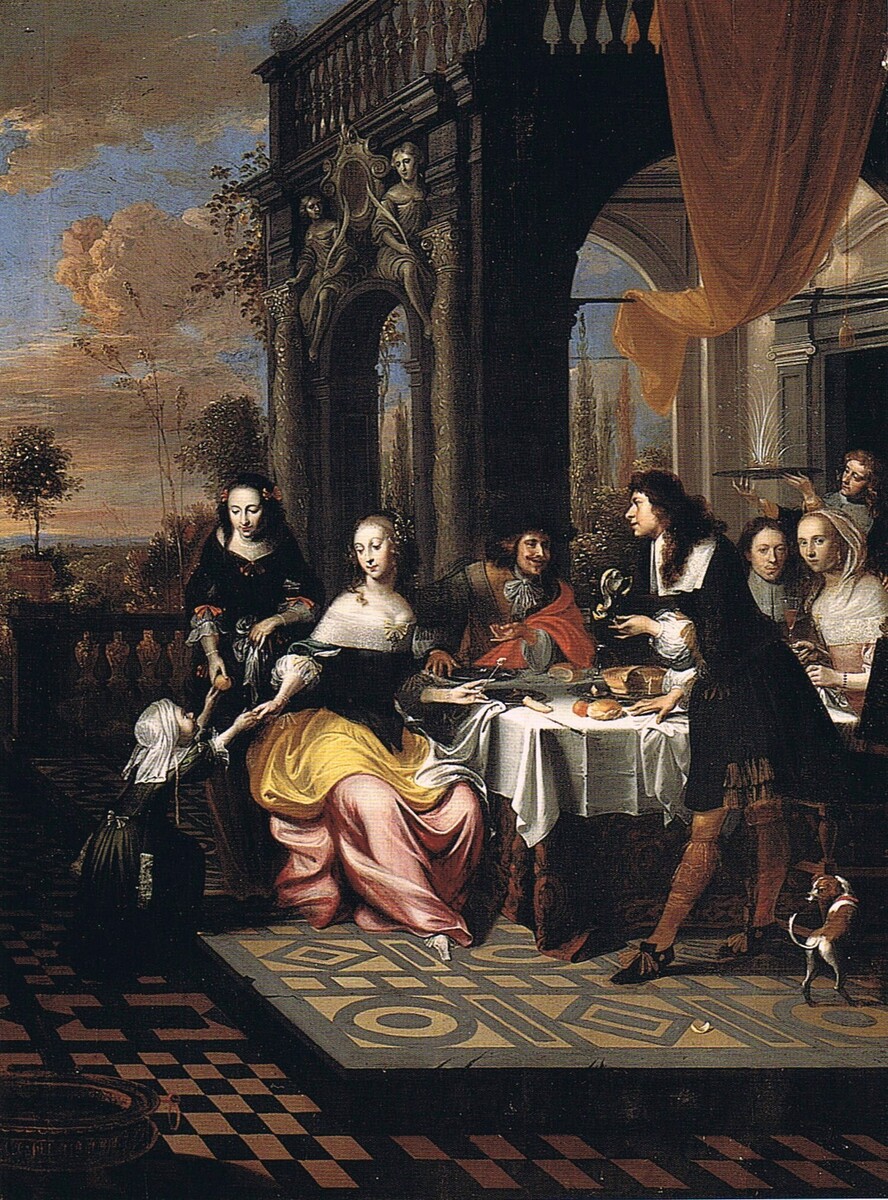
Painting for Sale
Janssens, Hieronymus
"Judith and Holofernes"
Comparative paintings
Click photos for more details

